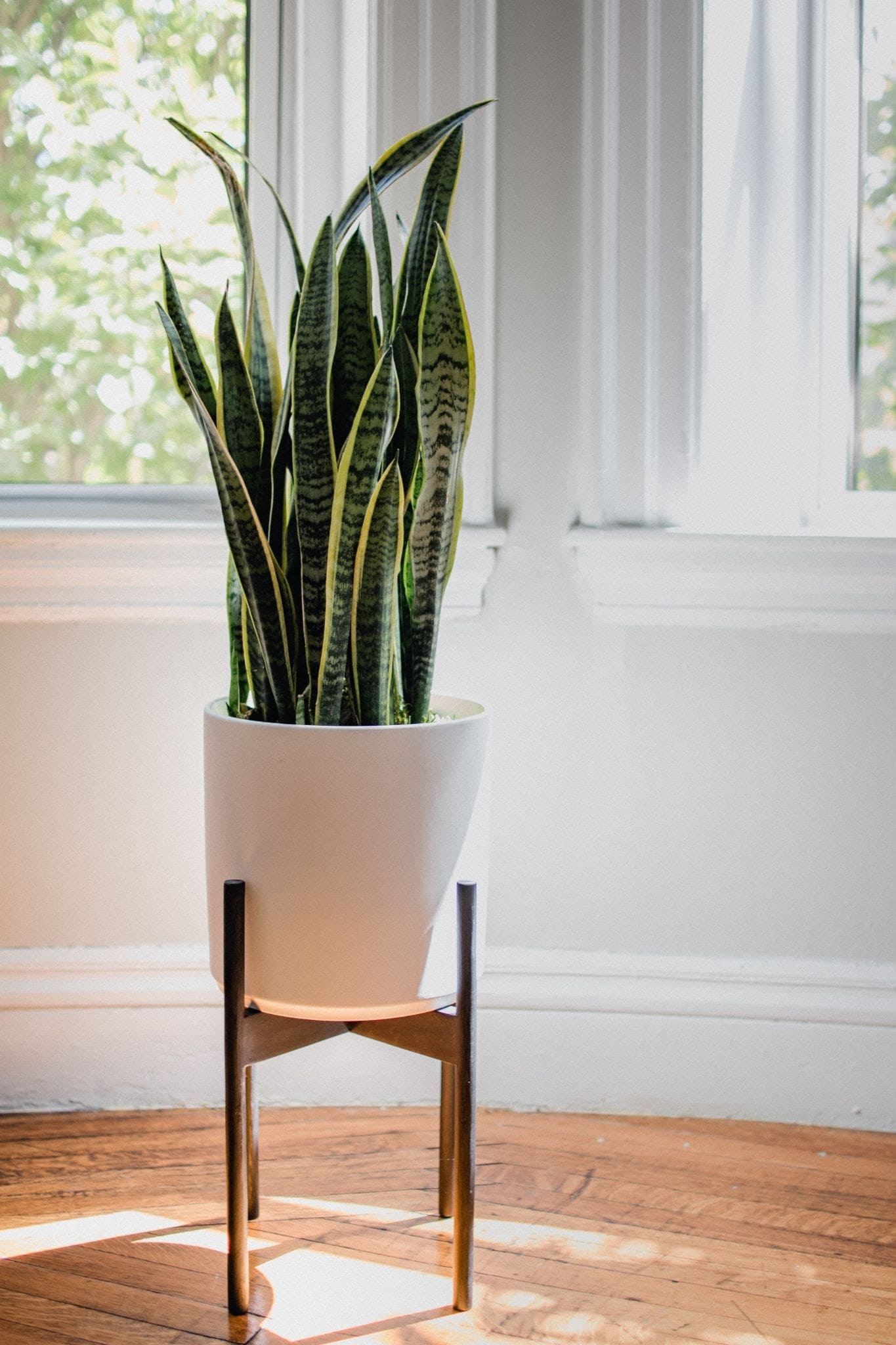Houseplants are a great way to liven up your home. They purify your air, add a colorful touch, and are fun and rewarding to care for. Plants also help make your home a happier place. As a retiree, you might be looking for more hobbies. Caring for houseplants is a great hobby, and it can be done easily even in small spaces (check out this post for more small space living tips). Here’s our houseplant guide for retirees.
Step One: Choose Your Houseplants
The first step is choosing which plants you’d like to have! If you’re new to houseplants or gardening, choose easy-to-care-for plants that will be more forgiving of the learning process. Here are some suggestions. They all grow well in a variety of conditions and small spaces, like in your Senior Living apartment.
Snake Plant. It’s pretty hard to kill a snake plant, to be honest. They don’t need a lot of light and can go weeks without water. Keep in mind that snake plants grow extremely slowly. If you’d like a large one, you might want to buy one that is already full grown. Water your snake plant every two weeks in the summer and four weeks in the winter.
Devil’s Ivy (Pothos). This plant is nicknamed “devil’s ivy” because it can survive even in very dark places. It also tolerates both overwatering and underwatering well. You should water your devil’s ivy once a week in summer, and once every two weeks in winter.
Jade Plant. An adorable succulent, the jade plant will survive even if you forget to water it once in a while. It does need full sunlight whenever possible, like a south- or west-facing windowsill. Watering once a week or when the soil is dry is best.
Button Fern. Ferns are relatively easy to grow. Button ferns are great because they stay smaller and more manageable than other varieties. Ferns like humidity, so they do well in bathrooms. It will grow well in full sun to partial shade. Like most plants, you should water when the soil is dry.
Spider Plant. Spider plants need weekly watering and a sunny windowsill, and that’s about it. As a bonus, they self-propagate, meaning they will produce baby spider plants that you can repot for even more plants!
If you’re a pro or want a challenge, you can try more difficult houseplants, like an African Violet, Fiddle Leaf Fig tree, or an Orchid.
Step Two: Choose Your Containers
The containers you choose will depend on the size and species of your plants. Some plants, like ferns and devil’s ivy, do well as hanging plants. Others might prefer a deeper or more shallow pot (none of the plants listed above is especially picky about their planters). If you buy a mature plant, you will need a large container. Buying a young plant means you will likely need to repot in a larger pot as it grows. You should also consider the color and design of your pots. Think about where the plant will sit and the size, shape, and color that will look best. Your containers should also have drainage holes, because a lack of drainage can cause root rot. You may also want saucers to go underneath your pots and protect your window sills from drainage.
Step Three: Plant Your Plants
You can sometimes buy plants already potted in containers. If you did, you can skip this step. If you purchased your plants and containers separately, and your plants are in plastic grower’s pots, you will need to transplant them. Make sure you don’t yank them out by the roots. Gently coax them out of their pot, turning them partially upside down and squeezing the sides of the pot gently to loosen the soil. Then nestle them into your soil in your new container. You can buy standard potting soil for indoor plants at most hardware stores, plant nurseries, or big-box retailers. After you repot your plant, water it thoroughly until water drains from the bottom of the container. Then place it in its new home!
Step Four: Care For Your Plants
The care instructions for your plants will vary. You can easily find care information on the small identification stake that came with the plant when you purchased it, or online, if care instructions were not included. If you buy your plants at a nursery, ask the employees about how to care for your plant. All plants need to be watered at some point, and have varying sunlight, humidity, and location needs. Some plants prefer different types of soil, although all the easy-care plants listed above can grow in any soil type. It might be helpful to make a list of your plants and their needs (water, sunlight, humidity, location) that you can refer to as needed. If you are going to be traveling for over a week, make sure you enlist someone to water your plants while you’re gone. The staff at your senior living community might be able to help with this.
And that’s it! You’re a plant owner! There will be some trial and error as you learn what your plants like and don’t like, but this is a fun challenge you can overcome. If your plants die, don’t worry, and don’t give up. Sometimes plants get sick, or you might have just been unlucky. Keep trying, and your successes will be even more rewarding. We hope this houseplant guide for retirees has been helpful!





